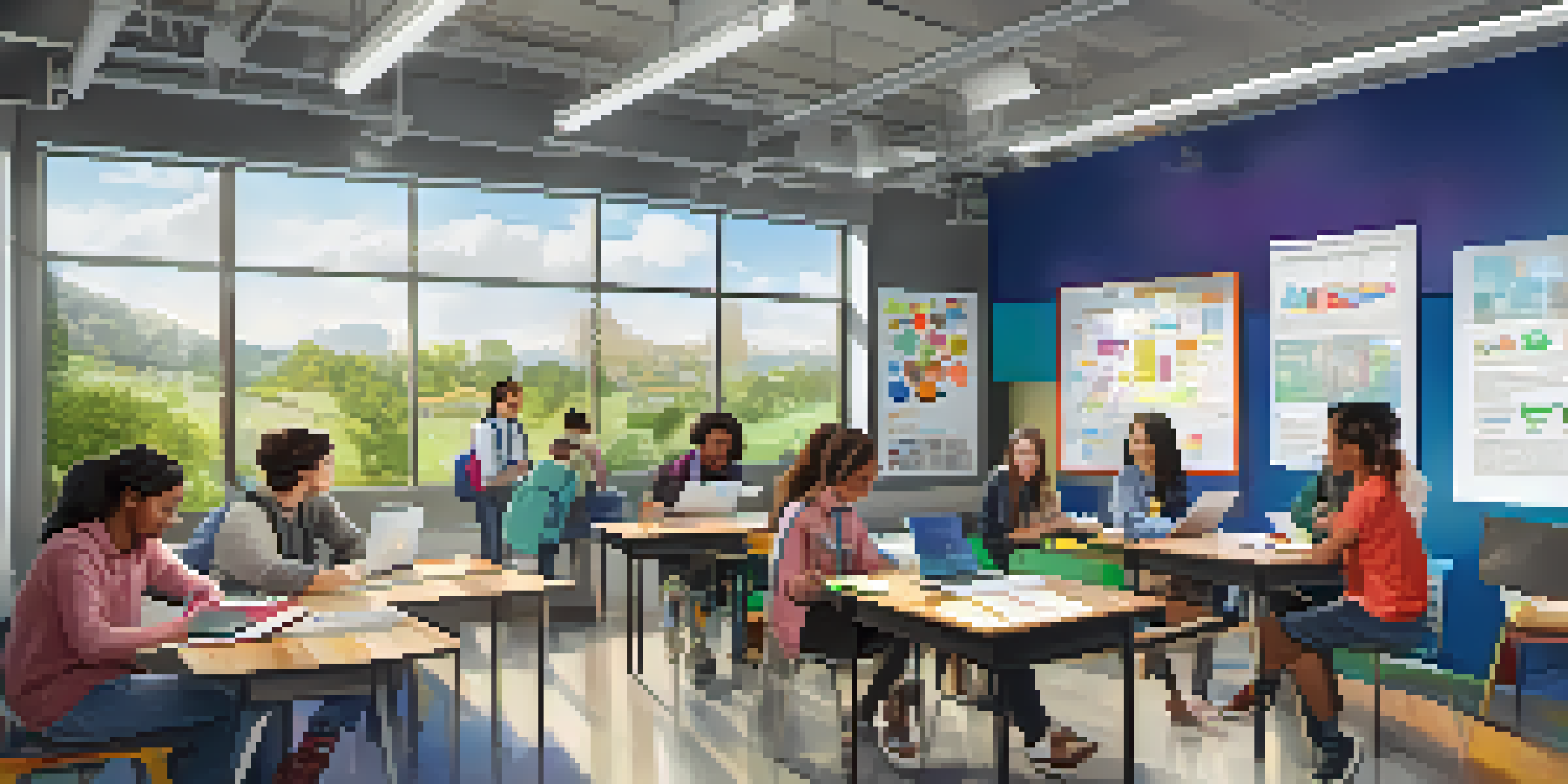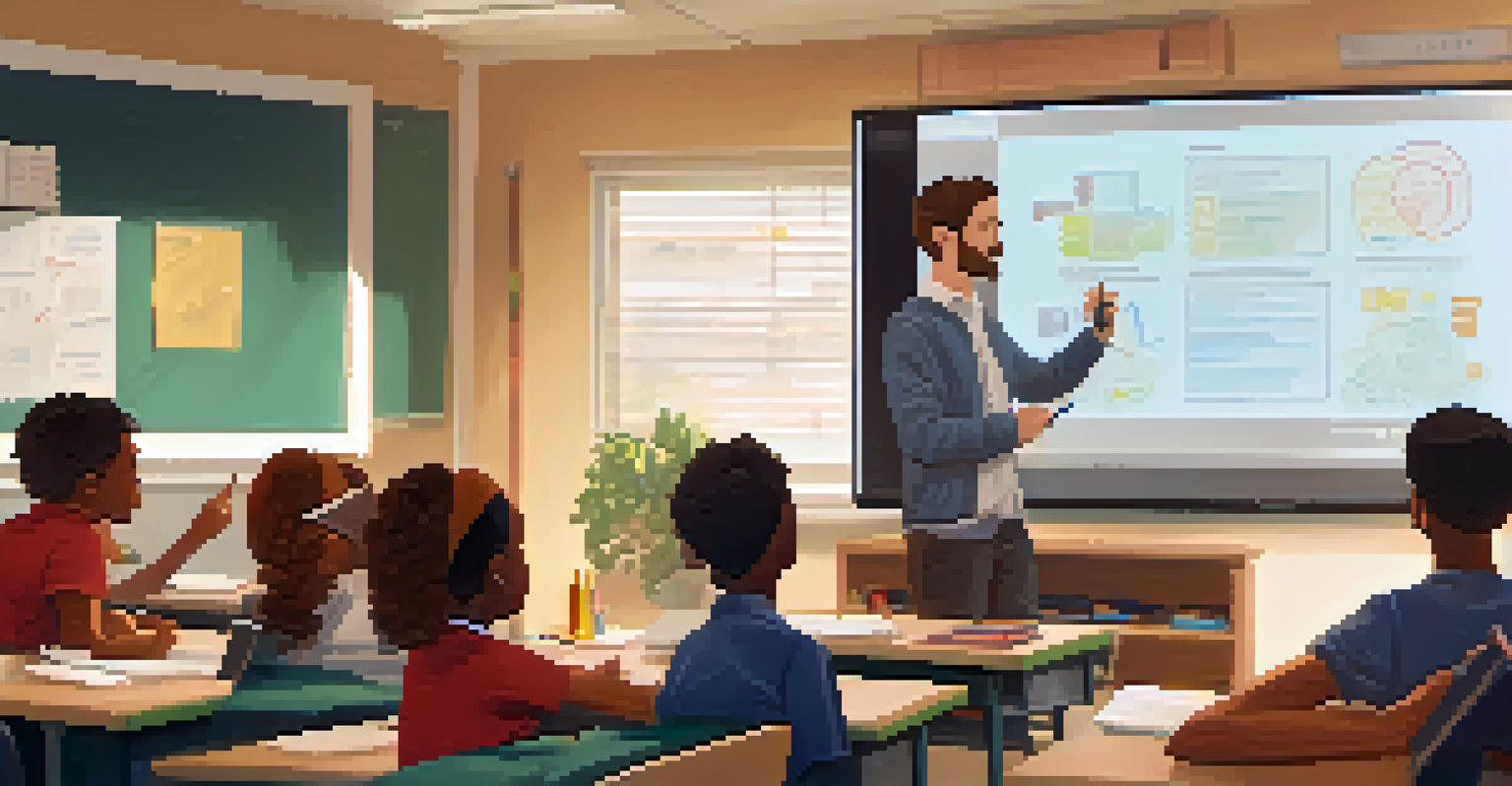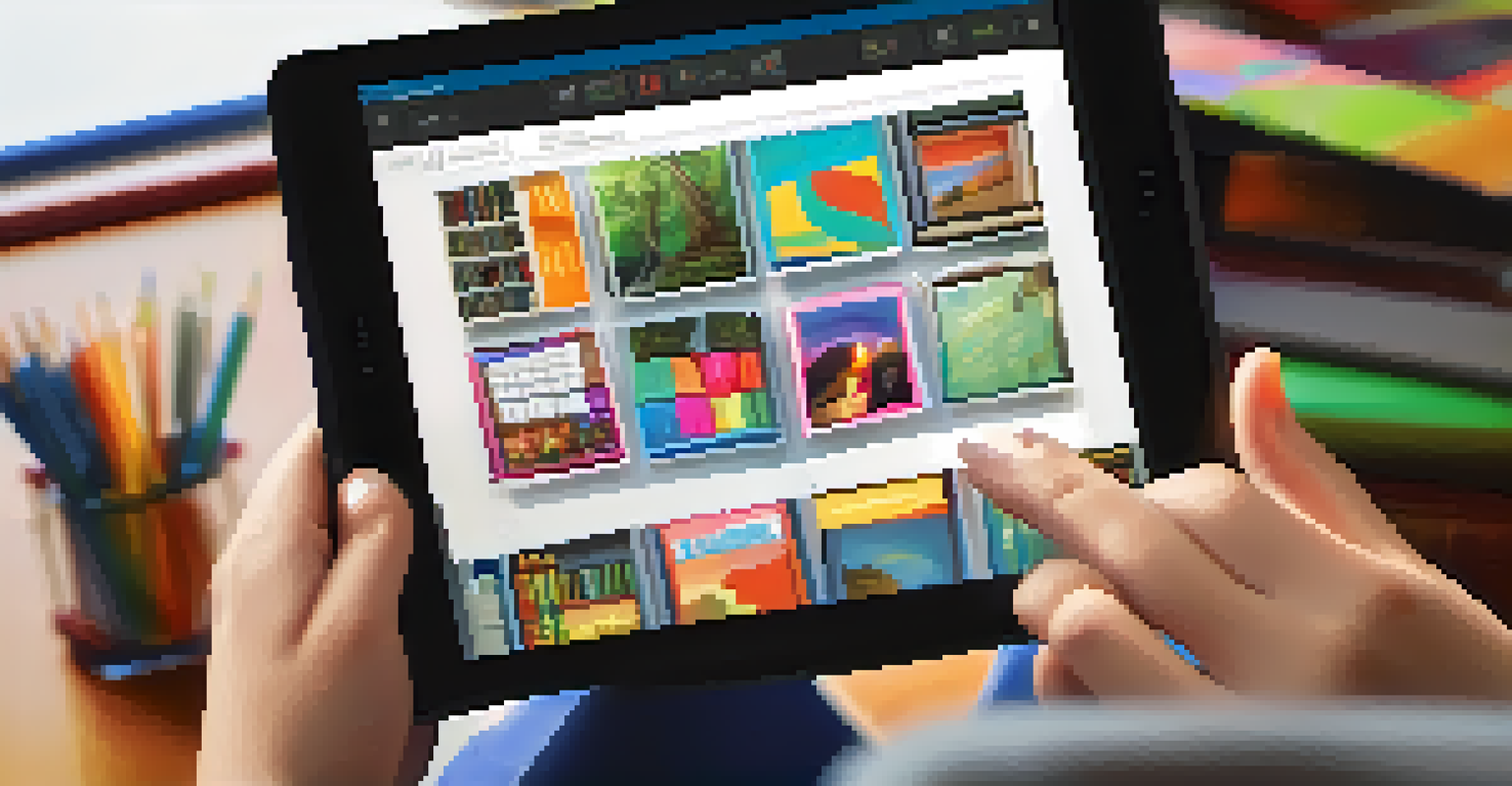Understanding Flipped Classroom: A New Learning Approach

What is the Flipped Classroom Model?
The flipped classroom is an innovative teaching approach that reverses traditional learning methods. Instead of introducing new topics in class and assigning homework afterward, students first engage with instructional content at home. This could be through videos, readings, or podcasts, allowing them to learn at their own pace.
The best way to predict the future is to create it.
Once students come to class, they actively work on tasks that reinforce the material they’ve studied. This shift allows for more interactive and hands-on learning experiences, making class time much more productive. Think of it as turning the classroom into a space for collaboration and application rather than passive listening.
This model encourages students to take ownership of their learning and fosters a deeper understanding of the content. By flipping the traditional structure, educators can better facilitate discussions and provide personalized support, catering to individual student needs.
Benefits of the Flipped Classroom Approach
One of the primary benefits of the flipped classroom is increased student engagement. When students learn at home, they can pause, rewind, or rewatch materials as needed, catering to their unique learning styles. This flexibility can lead to a more thorough grasp of the subject matter before they even step into the classroom.

Additionally, this approach allows for enhanced collaboration during class. With teachers available to guide discussions and activities, students can work together on problem-solving exercises or projects, deepening their understanding through peer interaction. It transforms the classroom into a dynamic learning environment.
Flipped Classroom Redefines Learning
The flipped classroom model shifts traditional education by having students learn content at home before engaging in hands-on activities in class.
Moreover, the flipped classroom can help teachers identify and address learning gaps more effectively. By monitoring students’ progress with online materials, educators can tailor their in-class support, offering targeted assistance to those who may need extra help.
Challenges of Implementing a Flipped Classroom
While the flipped classroom has its advantages, implementing this model can also come with challenges. One significant hurdle is ensuring all students have access to the necessary technology at home. Without reliable internet or devices, some learners may struggle to keep up with the content.
Education is not the filling of a pail, but the lighting of a fire.
Additionally, not all students may thrive in an independent learning environment. Some learners might prefer direct instruction and may find it challenging to adapt to this new structure. Teachers must be prepared to support these students and provide additional resources to help them succeed.
Furthermore, creating effective instructional materials can be time-consuming for educators. They need to develop engaging content that captures students' attention and is easy to understand, which may require a shift in their teaching strategies and additional training.
How to Create Effective Flipped Classroom Materials
Creating effective materials for a flipped classroom is crucial for its success. Teachers should focus on developing engaging and interactive content, such as short videos or interactive quizzes, that cater to diverse learning styles. Keeping the material concise and to the point will help maintain students' attention.
Incorporating various forms of media can also enhance the learning experience. For example, using visuals, animations, or real-world examples can make complex concepts easier to grasp. This multimedia approach not only keeps things interesting but also addresses different preferences in learning.
Engagement Through Technology
Utilizing technology in the flipped classroom enhances student engagement by providing flexible access to learning materials and fostering communication.
Lastly, it’s essential to provide clear instructions and expectations for students. This ensures that they understand how to engage with the materials effectively and are prepared for in-class activities. Clear communication can make all the difference in helping students transition to this new learning model.
The Role of Technology in Flipped Classrooms
Technology plays a pivotal role in the flipped classroom model. Tools like learning management systems (LMS), video platforms, and collaboration software enable educators to deliver content and track student progress effectively. These resources make it easier for students to access materials anytime and anywhere.
Furthermore, technology facilitates communication between teachers and students. Platforms that allow for discussions, feedback, and questions help maintain engagement and support learning outside of the classroom. This ongoing interaction can motivate students to take charge of their education.
However, it’s important to choose technology that enhances learning rather than complicates it. Ensuring that tools are user-friendly and accessible can help create a seamless learning experience that complements the flipped classroom model.
Real-World Examples of Flipped Classrooms
Many schools and educators worldwide have successfully implemented the flipped classroom model, showcasing its versatility. For instance, a high school math teacher might assign video tutorials on specific topics for homework, allowing students to practice problem-solving in class together. This way, students can ask questions and clarify doubts in real time.
In a science class, students might watch experiments via video before coming to school, allowing them to engage in hands-on activities during class. This application not only deepens their understanding but also sparks curiosity and enthusiasm for the subject.
Challenges in Implementation
Despite its benefits, the flipped classroom faces challenges like technology access and the need for effective instructional materials to support diverse learners.
These real-world examples highlight the adaptability of the flipped classroom model across various subjects and grade levels. By observing successful implementations, educators can draw inspiration and tailor the approach to meet their unique classroom needs.
The Future of the Flipped Classroom Model
As education continues to evolve, the flipped classroom model is likely to gain even more traction. With the rise of online learning and the increasing integration of technology in classrooms, this approach aligns well with modern educational trends. It encourages self-directed learning, which is becoming increasingly important in today’s fast-paced world.
Moreover, the ongoing pandemic has accelerated the adoption of blended learning models, making the flipped classroom a relevant solution for many educators. It provides a structured way to combine online and in-person learning, offering flexibility while maintaining educational rigor.

Looking ahead, it will be essential for educators to continuously refine their strategies and materials to enhance the effectiveness of the flipped classroom. By staying attuned to student needs and educational innovations, teachers can create a dynamic learning environment that prepares students for success in the future.